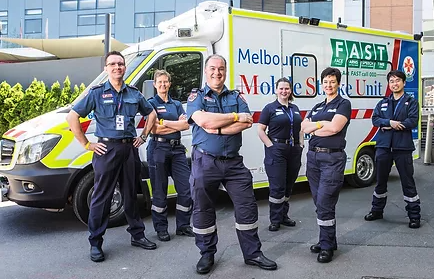 Neurologists in Victoria have welcomed a move by New South Wales to follow their example of a Mobile Stroke Unit, with plans for a modified stroke ambulance to be on the road by 2022.
Neurologists in Victoria have welcomed a move by New South Wales to follow their example of a Mobile Stroke Unit, with plans for a modified stroke ambulance to be on the road by 2022.
As part of a $10 million plan, NSW will pilot a CT scanner-equipped Stroke Ambulance program to help provide time-critical treatment for people with acute stroke.
NSW health minister Brad Hazzard said the pilot program in NSW will use telemedicine systems which enable online, real-time communication with specialists via videoconferencing.
“A radiographer in the MSU will relay CT scans to telestroke specialists, who identify the type of stroke and then advise MSU staff of the treatment plan,” Mr Hazzard said.
In Melbourne, a mobile stroke ambulance has been operating for three years and has increased the number of patients treated within the ‘golden hour’ by a factor of ten, compared with a conventional hospital pathway, according to the Australian Stroke Alliance.
Led by neurologists Professor Stephen Davis and Professor Geoffrey Donnan, the Victorian Mobile Stroke Unit has attended and assessed more than 1601 patients, reducing the average time from diagnosis to treatment by 40 minutes.
In the Victorian model the onboard MSU team includes a stroke neurologist as well as two paramedics (including one Mobile Intensive Care MICA paramedic), a CT radiographer, and a stroke nurse specialist.
Patients can be treated with thrombolysis in the ambulance or fast-tracked to a stroke unit for clot retrieval.
“We certainly welcome this announcement. It is a tremendous signal to other states and territories that urgent stroke care should be available to all Australians, especially those in rural and remote environments,” said Professor Donnan.
“We look forward to working with our NSW colleagues as we standardise urgent stroke care across Australia.”
Stroke Alliance partner, David Waters, the chief executive of the Council of Ambulance Authorities, welcomed the news: “This decision means that hundreds, if not thousands of patients in Sydney will now return home to their families to continue their lives without the long-term debilitating effects of stroke. It sets a great example for state ambulance services to embrace Australian ingenuity – while saving lives,” Mr Waters said.